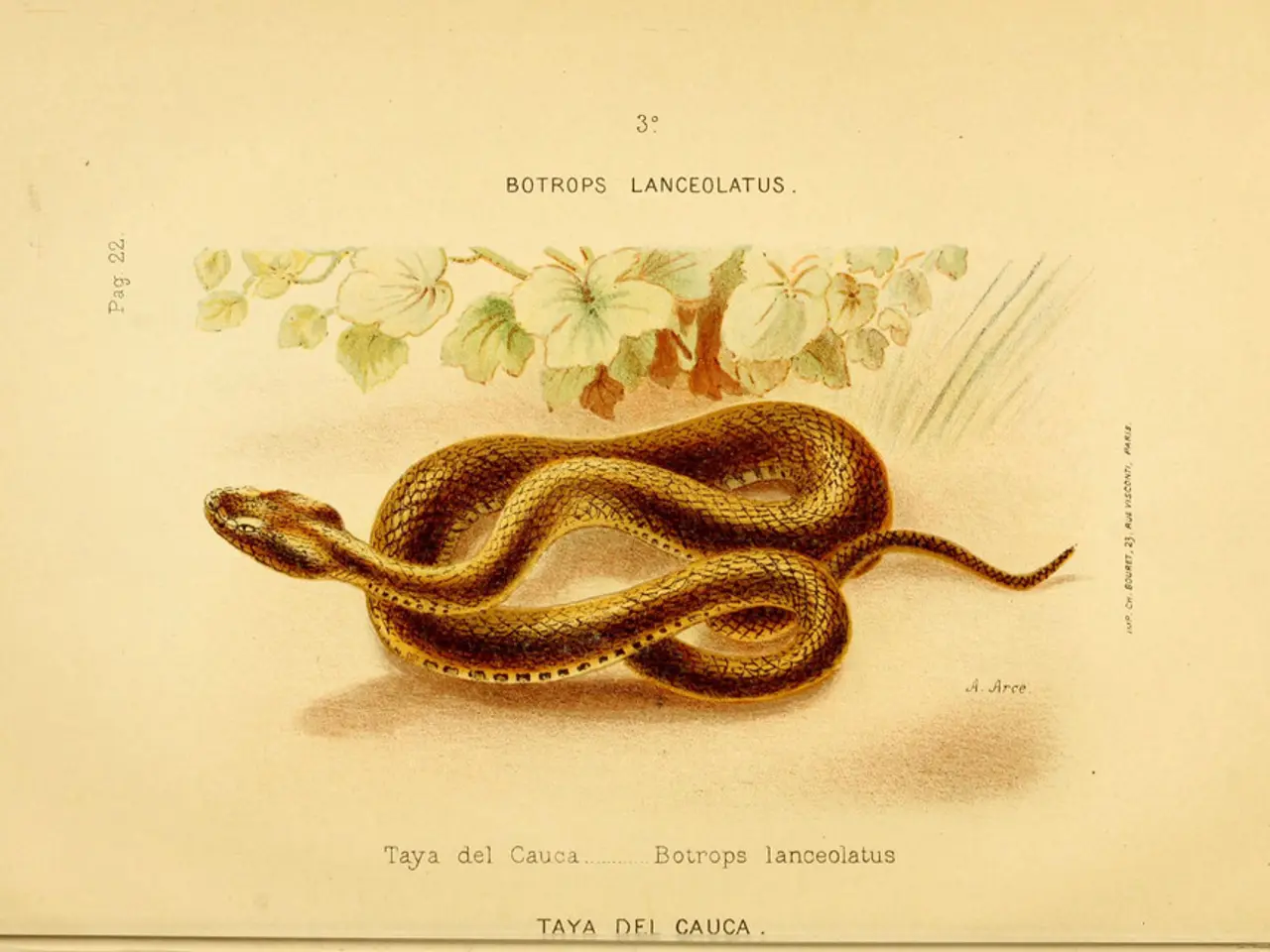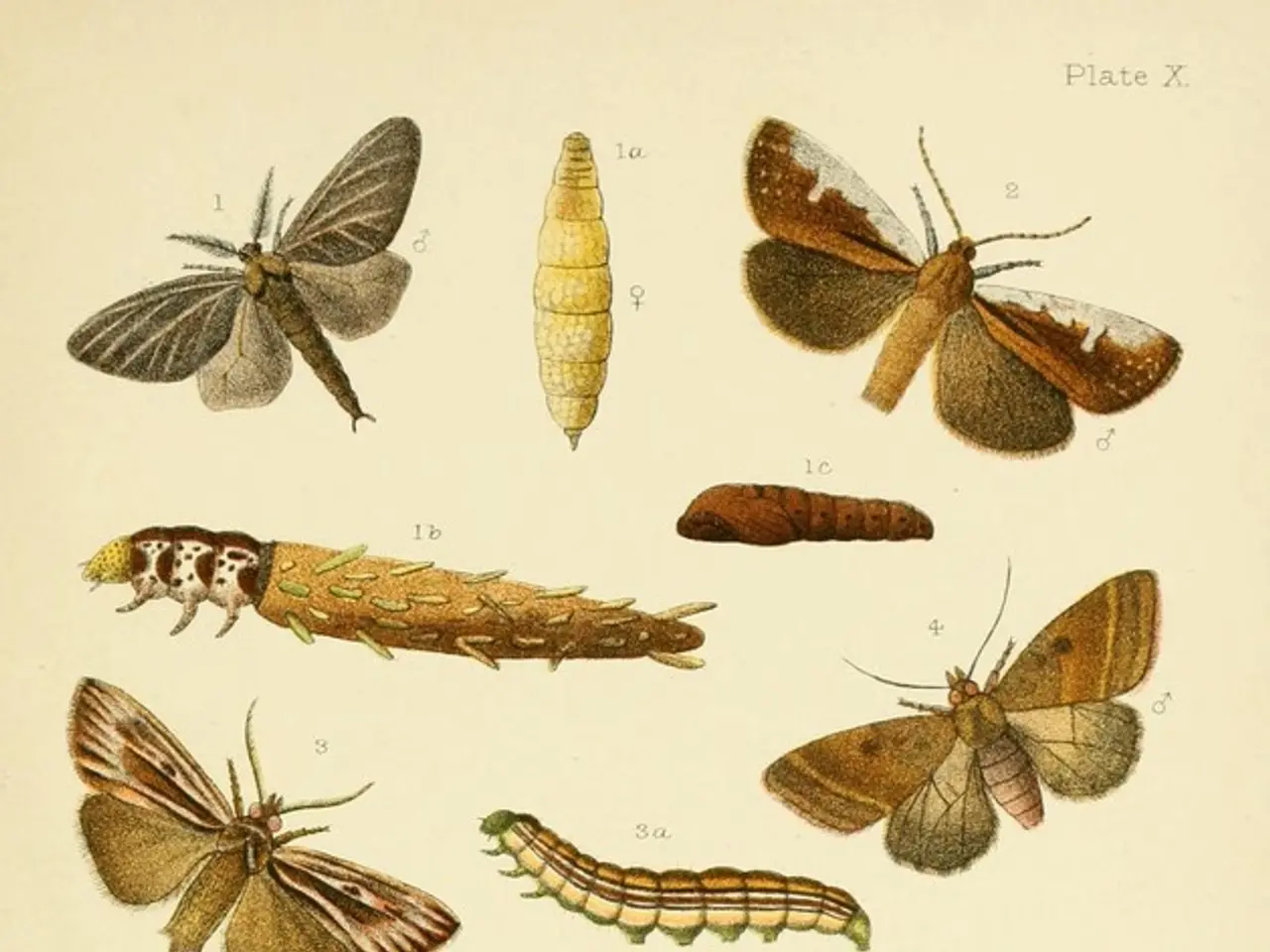Massive 47-million-year-old serpent unearthed in India, setting a new record among ancient reptilian species.
In the heart of the Kutch region, a hotbed for paleontological research, a team from the Indian Institute of Technology Roorkee made a groundbreaking discovery. They unearthed the fossil of a new prehistoric snake species, named Vasuki indicus, in the Panandhro Lignite Mine in Gujarat, India.
The finding adds a new chapter to our understanding of ancient ecosystems and offers critical insights into the evolution of snakes. The name Vasuki indicus is a tribute to the snake's cultural and mythological significance in Indian folklore, where Vasuki is a divine serpent known to coil around the neck of Lord Shiva.
The Madtsoiidae family, to which Vasuki indicus belongs, had a wide distribution across Africa, India, South America, and Australia, spanning about 100 million years from the Late Cretaceous to the Late Pleistocene. The discovery of Vasuki indicus provides a rare opportunity to study the evolutionary history of the Madtsoiidae family in more detail.
The physical structure of Vasuki indicus suggests that it had a thick, cylindrical body and a broad vertebral structure, indicating a slow-moving predator that likely relied on ambush tactics to hunt. The fossil of Vasuki indicus is estimated to have measured approximately 50 feet in length and likely weighed over 2,200 pounds.
The discovery of Vasuki indicus not only sheds light on the evolutionary history of snakes but also helps scientists understand how environmental factors influenced the development of large-bodied creatures. The fossil dates back to the Middle Eocene period, around 47 million years ago, a time when tropical forests in India were rich in biodiversity and suitable for the growth of large reptiles.
The extinct snake family Madtsoiidae was a group of large, land-dwelling snakes that lived during the Middle Eocene period. Their distribution across continents highlights the potential for intercontinental dispersal of species during ancient periods. The discovery of Vasuki indicus challenges long-held assumptions about ancient snake species, suggesting a world where massive reptiles roamed.
In summary, the discovery of Vasuki indicus is a significant addition to our understanding of ancient reptilian life and the ecosystems they inhabited. The findings have been published in the journal Scientific Reports, and they underscore India's pivotal role in uncovering the mysteries of prehistoric times.
- This discovery in the Kutch region, particularly the fossil of the new prehistoric snake species named Vasuki indicus, is contributing to the education and self-development of scientists by offering fresh insights into the general news of ancient ecosystems and the evolution of snakes.
- The discovery of Vasuki indicus shows ties between environmental science and the development of this extinct snake species, suggesting that large-bodied creatures likely thrived in conditions similar to the tropical forests of the Middle Eocene period in India.
- The unearthing of this fossil in Gujarat, India, is a testament to the progress in scientific research and technology, as it enables a deeper understanding of medical-conditions like evolutionary history.
- The naming of this prehistoric snake, Vasuki indicus, reflects its cultural and mythological significance in Indian folklore, bridging the gap between science and lifestyle by acknowledging the rich history and storytelling traditions of various cultures.




